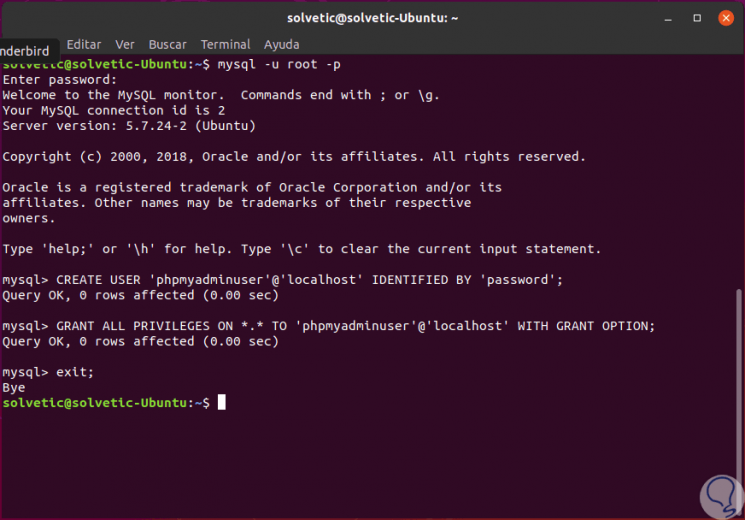


Verify your password policy by running this command in the mysql command line (with root access): Then, on the Linux command line, type and execute:Īnd (hopefully) mysql will start without error. Hopefully this will help someone, before you pull out all your hair: I got the idea from this bug report: and it worked for me. Then I added the plugin line (below) and restarted mysql, and it worked – my password policy changed on mysql startup. When restarting mysql, I kept getting “Job for rvice failed because the control process exited with error code.” error. Also make sure you're using the latest verion of PHP. TO 'phpmyadmin''localhost' WITH GRANT OPTION FLUSH PRIVILEGES Use this user anywhere you want 'root' access.
Then, in MySQL 5.(or 0 for LOW) to my /etc/mysql/my.cnf file, or to my /etc/mysql//mysql.cnf file alone did not work for me. CREATE USER 'phpmyadmin''localhost' IDENTIFIED BY 'As first, change of database to the mysql one with the following query: use mysql Now that you have access to the mysql CLI, you will be able to run queries without a problem, including the one that changes the password of Root.
SET ROOT PASSWORD PHPMYADMIN UBUNTU VERIFICATION
Now that mysql is running without any security verification locally, you need to login as root with the following command in the MySQL CLI: mysql -u root mysql 4. In order to log in to phpMyAdmin as your root MySQL user, you will need to switch. This allows for some greater security and usability in many cases, but it can also complicate things when you need to allow an external program like phpMyAdmin to access the user. In Ubuntu systems running MySQL 5.7 (and later versions), the root MySQL user is set to authenticate using the authsocket plugin by default rather than with a password. Because this is insecure, if the server is started with the -skip-grant-tables option, it enables -skip-networking automatically to prevent remote connections. Configuring Password Access for the MySQL Root Account. This enables anyone to connect without a password and with all privileges, and disables account-management statements such as ALTER USER and SET PASSWORD. However, it will be executed with the skip-grant-tables argument: mysqld_safe -skip-grant-tables & So secure the MariaDB and set the MariaDB root password with the following command: mysqlsecureinstallation. This is ok for the CLI, but it means that PhpMyAdmin and ALL other clients will not be able to use root credentials The best solution is to create a new user for PhpMyAdmin (or use the existing one if it was created during install) and grant it the required privileges. If you are sure that there's not any MySQL process already running in the background, you can start the safe version of MySQL with mysqld_safe. This will allow you to start the mysql service in safe mode.

Stop active MySQL serviceĪs first step, you need to stop any running instance of MySQL that is active: sudo service mysql stop
SET ROOT PASSWORD PHPMYADMIN UBUNTU HOW TO
In this tutorial we'll show how to reset the root password of your MySQL server in Ubuntu 16.04. Did you forgot the root password of MySQL in your server? Did you reinstalled MySQL in your server, typed wrong the password and now you're unable to access your MySQL server? Whatever the reasons is, is pretty important to know how to reset the root password in your MySQL server in case that something like the mentioned cases happen.


 0 kommentar(er)
0 kommentar(er)
